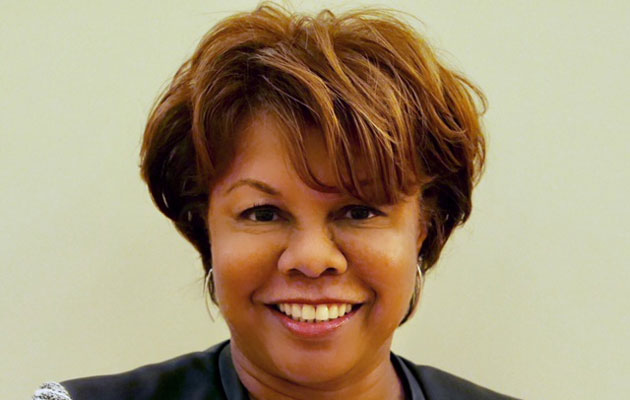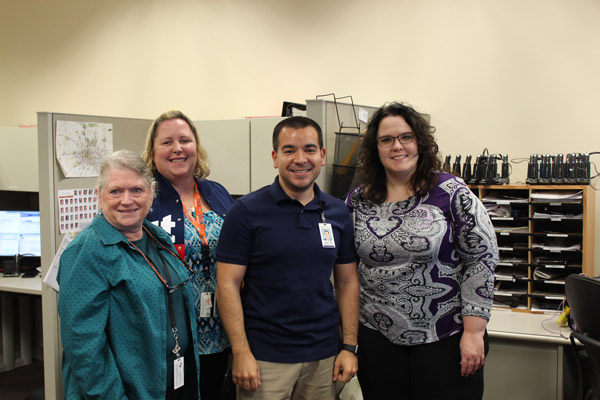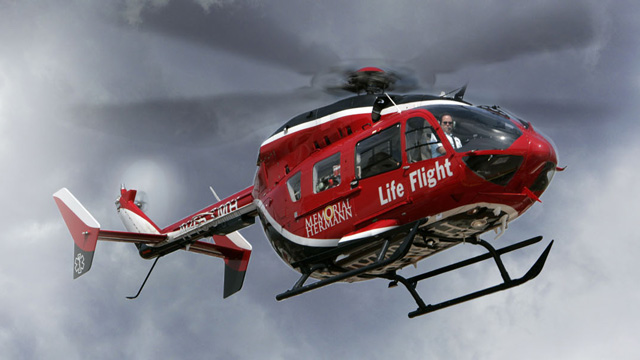
Challenge: Build a System-Wide Transfer Center
While Fleming has worked for Memorial Hermann in various capacities since 1984, it was in 2011 that she was given her greatest challenge: create a system-wide transfer center for Memorial Hermann which at the time had 10 acute care facilities.
“At the time, Memorial Hermann’s transfer center was housed on the TMC campus and only facilitated transfers for Memorial Hermann-TMC and Children’s Memorial Hermann Hospital. All the other hospitals in the community, everybody did their own thing. My charge was to transition everyone to a system transfer center with one team facilitating all external requests as well as transfers across all Memorial Hermann facilities,” says Fleming.
A Systematic Approach
Over the next two years, Fleming worked systematically to bring all 10 Memorial Hermann campuses on board. “For six weeks, I met weekly with each hospital’s leadership team - their chief medical officer, director of case management, business office director, OA (operations administrator) lead – all the major stakeholders in the transfer process. This gave me an opportunity to understand their cultures as we worked to develop a process that would mirror the current process of the Memorial Hermann-TMC campus as closely as possible, understanding that each community had a slightly different setup.”
The Golden Half Hour
Fleming says the new process had to ensure that everyone operated within the guidelines of state and federal regulations regarding transfers. “The regulations are clear. If you have capability and capacity to care for a patient, your response to a transfer request should be ‘yes.’ And you have 30 minutes to decide, starting with the initial ‘Thank you for calling Memorial Hermann, this is Cheryl Fleming. How can I help you?’ and ending with ‘Patient XXX has been accepted to Memorial Hermann in the Texas Medical Center.’ The time clock ends when I tell that physician or his designee ‘You've been approved to transfer your patient.’"
Overcoming Skepticism
Fleming says those initial meetings helped her build trust, which helped her – and eventually her team - overcome some initial skepticism that a central, system transfer center would be objective and efficient. “One of the things that I really wanted to establish out of the gate was trust. With the Memorial Hermann-Texas Medical Center being a Level I trauma center, the perception of many leaders - and this was from a blind survey that was conducted prior to my taking the job, the results of which were shared with me – was that no one could come in and be Switzerland.”
But the proof has been in the results. Over the past five years, calls to the Transfer Center have increased from 1,800 to over 3,000 a month, a 67% increase in volume Of course, what matters most is that patients are getting where they need to be, faster.
 Keys to Success: People, Process and Technology
Keys to Success: People, Process and Technology
Fleming credits the Transfer Center’s success to the fact that she has an all-clinical staff, a factor she says makes a “huge difference.” 90% are registered ICU- and ED-trained nurses, and the other 10% are paramedics. “If someone calls in and says a patient has a gastrointestinal bleed, the nurse will ask, ‘Is it upper or lower? What's the hemoglobin and what's the hematocrit?’ They know what to ask to make the best decisions, fast.”
Second, for neurology, including stroke, and pediatric patients, Memorial Hermann employs a regional process through which designated Memorial Hermann affiliated physicians take calls for multiple facilities. In stroke and neurosurgery, they take calls for Memorial Hermann Southwest Hospital, Memorial Hermann-TMC and Memorial Hermann Memorial City Medical Center. For pediatric, they take calls for Memorial Hermann-TMC and Memorial Hermann Memorial City. “You’ve got a physician quarterback who fields all transfer requests for those two or three facilities. Based on the clinical picture that is presented by the sending physician, they determine which campus is best suited to care for that patient,” says Fleming.
Fleming also credits the Transfer Center’s success to its new VoIP (Voice over Internet Protocol) phone system and management software, which routes calls more efficiently and enables her to monitor and measure her team’s performance. “I'm able to monitor the average time to facilitate a call, number of calls per staff member, call volumes based on time of day and day of the week, and our call abandonment rate. It helps me make better business decisions,” she says. Business decisions that have led to better transfer performance, the impetus for creating a new central transfer function in the first place.
“We make it happen.”
When asked to describe the Memorial Hermann Transfer Center in a nutshell, again Fleming doesn’t mince words. “If you're at another hospital or in an ER in town and you want to go to Memorial Hermann, you call my team and we make it happen.”
Red Duke Trauma Institute Newsletter Sign Up
Use the form below to sign up to receive our Red Duke Trauma Institute Newsletter with helpful articles about our services, case studies relevant to clinical protocols practiced on a daily basis, information about available educational opportunities and many other updates for health care professionals and first responders.
